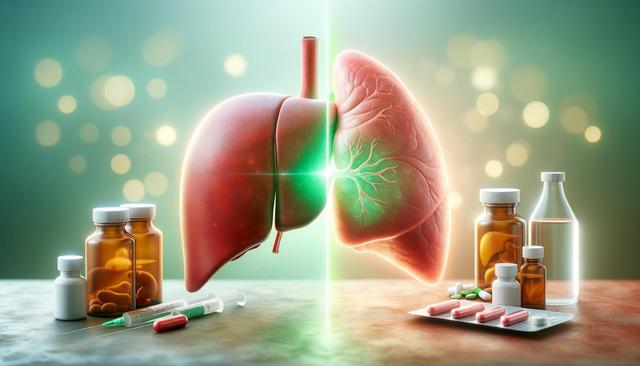Recognizing the Early Signs and Symptoms
Identifying the early signs and symptoms of liver cirrhosis is crucial for timely diagnosis and management. In the initial stages, the condition might not present noticeable indications, but as it advances, symptoms become more apparent. Common early signs include fatigue, weakness, unexplained weight loss, and a loss of appetite. Some individuals may also experience nausea, abdominal discomfort, or swelling in the legs and abdomen due to fluid retention. Notably, jaundice—characterized by yellowing of the skin and eyes—can indicate more advanced liver damage.
Understanding these early indicators helps in prompt medical consultation and intervention. Medical professionals often recommend routine health check-ups and liver function tests for individuals at risk. Paying attention to these symptoms and seeking early medical advice can significantly influence treatment outcomes.
How Cirrhosis Impairs Liver Function
To grasp the seriousness of liver cirrhosis, it is essential to understand how cirrhosis affects overall liver function. The liver plays a vital role in detoxification, blood filtration, digestion, and nutrient storage. When cirrhosis occurs, healthy liver tissue is gradually replaced by scar tissue, which disrupts these critical functions. As a result, the liver becomes less capable of processing nutrients, hormones, and drugs, and its ability to produce proteins and clotting factors diminishes.
This deterioration can lead to several complications, including:
- Portal hypertension (increased pressure in the liver’s blood vessels)
- Internal bleeding due to varices
- Ascites (accumulation of fluid in the abdomen)
- Hepatic encephalopathy (confusion or cognitive impairment caused by toxins in the brain)
Effective treatment aims not only to manage these complications but also to preserve remaining liver function and slow the progression of the disease.
Exploring Causes and Risk Factors
There are several common causes and risk factors for cirrhosis, many of which are preventable with lifestyle modifications and regular health monitoring. Chronic alcohol abuse remains one of the leading causes globally. However, other significant causes include chronic viral hepatitis (especially hepatitis B and C), non-alcoholic fatty liver disease (NAFLD), and certain genetic disorders such as hemochromatosis or Wilson’s disease.
Key risk factors include:
- Obesity and metabolic syndrome
- Unsafe practices that increase the risk of hepatitis transmission
- Prolonged use of certain medications or exposure to toxins
- Family history of liver disease
Understanding these drivers enables individuals and healthcare providers to take proactive steps in prevention, such as vaccinations, weight management, and harm-reduction strategies.
Diagnosis and Monitoring of Liver Damage
Accurate diagnosis is essential for effective treatment planning. Physicians use a combination of blood tests, patient history, and diagnostic imaging for liver damage to confirm cirrhosis and assess its severity. Diagnostic tools such as ultrasound, CT scans, and MRI provide detailed images of the liver, helping to detect structural changes, blockages, or tumors. Additionally, elastography—a specialized form of ultrasound—can measure liver stiffness, which is indicative of fibrosis or scarring.
In some cases, a liver biopsy may be performed to determine the extent of damage more precisely. These diagnostic measures are essential for staging the disease and tailoring a treatment plan. Ongoing monitoring using imaging and lab work ensures that any progression or complications are identified early, allowing for timely interventions.
Managing Cirrhosis and Accessing Care
Effective treatment involves a multidisciplinary approach that includes medical, nutritional, and lifestyle components. Chronic liver condition management programs provide structured support through medication, dietary counseling, and regular monitoring. These programs aim to reduce the underlying cause of liver damage, control symptoms, and prevent complications.
For individuals with more advanced disease, specialized care becomes essential. Advanced liver disease care services often involve hepatologists, dietitians, and social workers who collaborate to offer comprehensive care. Treatment strategies may include:
- Antiviral therapy for hepatitis-related cirrhosis
- Medications to control symptoms and prevent complications
- Paracentesis for fluid removal in cases of ascites
- Endoscopic procedures to manage variceal bleeding
In end-stage cases, liver transplantation may be considered, with candidates undergoing thorough evaluation to determine eligibility. Early enrollment in care programs and consistent follow-up can significantly enhance quality of life and long-term outcomes.
Conclusion: Taking Proactive Steps Toward Liver Health
Liver cirrhosis is a serious condition, but with early detection and a comprehensive care plan, it is possible to manage its progression and maintain a good quality of life. Recognizing the early signs and symptoms of liver cirrhosis, understanding how cirrhosis affects overall liver function, and being aware of the common causes and risk factors for cirrhosis are critical first steps. Through diagnostic imaging for liver damage and access to chronic liver condition management programs and advanced liver disease care services, individuals can receive the targeted support they need. Proactive involvement in one’s health can pave the way for better outcomes and improved well-being.




Leave a Reply